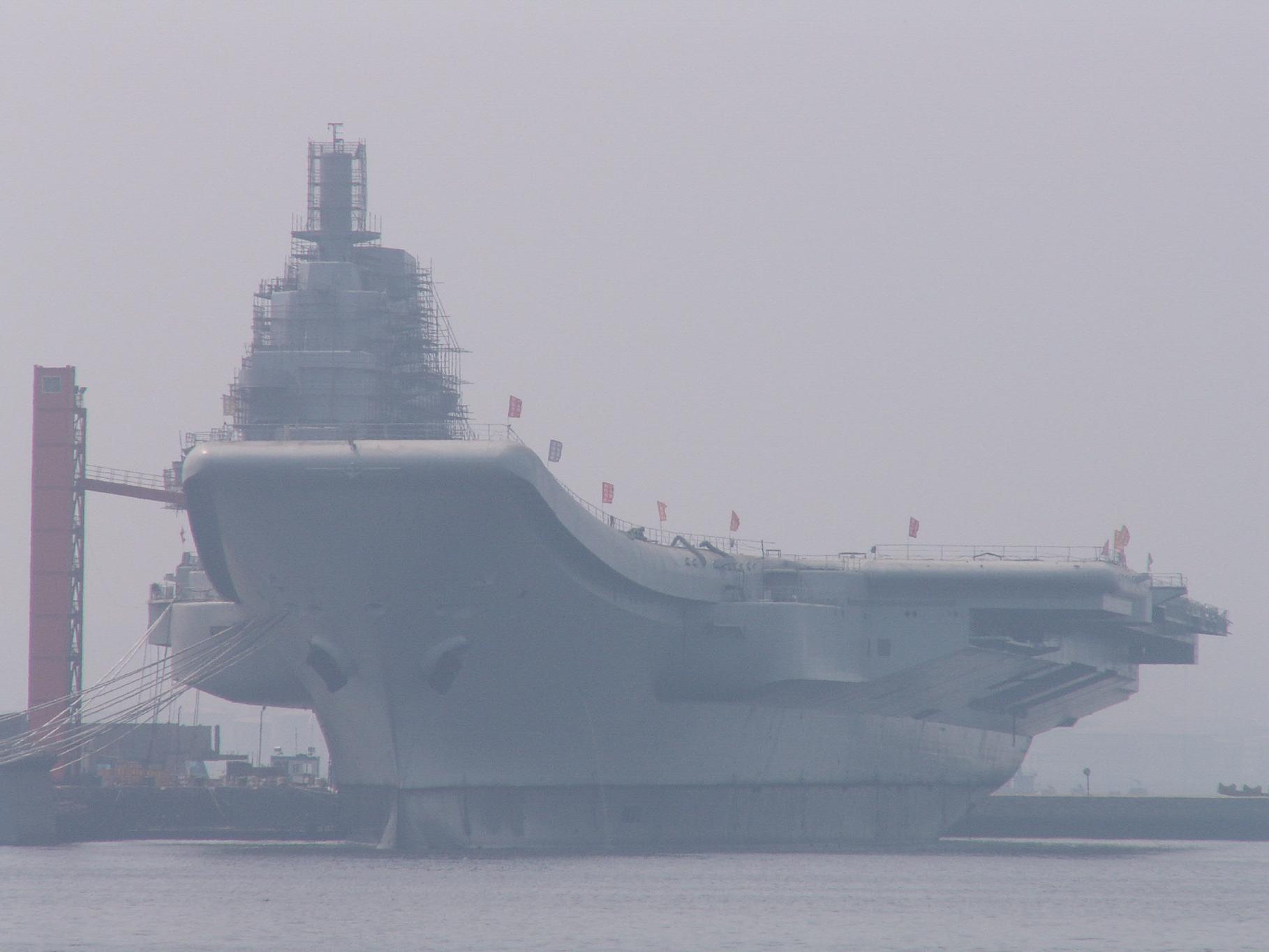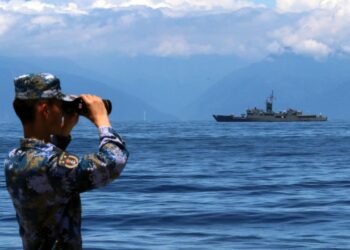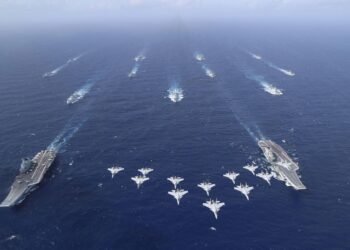If international relations are driven by perceptions of relative strengths and weaknesses, then power projection matters the most. Power, as understood in modern statecraft, is contingent on a country’s willingness to project its capacity if not its intent. China’s initial testing of its stealth aircraft J20 in January 2011 and the recent showcasing of its aircraft carrier – formerly the Varyag and now Shi Lang – signify its growing military capability.
In late 2008, Chinese officials had stated that aircraft carriers reflected a nation’s comprehensive power. Thus, China’s intentions in developing this vital strategic asset are amply clear. For some time now, China has been working towards developing a blue water navy with the strategic vision of “safeguarding territory, development of national economy and overseas interests.” Recent developments testify to the fact that China sees the need to project and protect its interest beyond its coastal Exclusive Economic Zone. The first aircraft carrier will be a treated as a learning curve; China will induct indigenous carriers into the PLA navy (PLAN) between 2015 and 2020.
The first part of this commentary focuses on the present status of China’s first carrier and the phases of carrier introduction into the PLA navy. The second part identifies the drivers behind the PLAN’s carrier programme and the influence that a carrier force can provide in various maritime areas.
The Chinese ‘Eugene Ely’ Waits
At 3.16 pm on November 14, 1910, Eugene Ely took off in a 50 HP Curtiss pusher biplane from a temporary flight deck built on the US light cruiser Birmingham and added a new dimension to naval operations. China’s first carrier launch will, similarly, introduce a new dimension to the Chinese navy’s prowess and signal a paradigm change in the strategic philosophy of the Asia Pacific region.
The world is focussed on the aircraft carrier Varyag procured by China from the Ukraine and undergoing refurbishment since 2002 at Dalian. The carrier is expected to be named Shi Lang after the Qing dynasty admiral who conquered present-day Taiwan in 1681. This renaming is perhaps clear evidence of China’s intent and its ambition to extend its reach and capabilities in the maritime domain. Reports indicate that the installation of phased array radars and weapon fit would make this carrier a more independent platform compared to its US counterparts which rely on AEGIS-type guided missile ships for protection.
In November 2008 the director of the ministry of national defence, foreign affairs office, Major General Qian Lihua, had stated that: “the question is not whether you have an aircraft carrier, but what you do with your aircraft carrier.”
The second part of the statement makes the intent amply clear. The answer to the first part is still under a cloud as the exact status of the Shi Lang’s refurbishment and the state of training of the crew are unknown. An aircraft carrier is introduced into a navy in three phases.
First, is the procurement and/or construction. Carriers can be constructed or refurbished in a planned time frame provided that the funds and equipment are readily available.
Second, is the creation of the expertise required to operate a carrier. This training takes time, money and may be lives, especially when a nation with no prior experience attempts it on its own.
Third, is the change in the operating tactics and doctrines. This takes time as the tactics have to be rehearsed and assessed as part of computer-simulated war games before being exercised in the maritime environment and promulgated as a doctrine. The first part is in progress and reports indicate that sea trials are likely to commence this year. The second phase, most probably ground training, is also likely to have commenced given that a concrete mock-up of the carrier has been constructed at the Wuhan Naval Research Facilities complete with ski ramp, deck markings, island superstructure and a few aircraft. This can be counted as the first part of the second phase. The latter part of the second phase could commence with flight trials at sea. It is possible that the third phase may begin during the final stages of the second phase.
A successful accomplishment of the laid down time lines will enable China to meet its deadline of inducting indigenous carriers by 2020 and thus achieve a multidimensional maritime capability by including airspace in its operating sphere.
Drivers Behind the Desire
It is worthwhile to explore the intentions behind the Chinese desire – bordering on desperation – for a blue water capability and specifically aircraft carriers. When Admiral Li Yin spoke of China’s maritime strategy as comprising of three components: “ocean security, ocean development interests, and how to deal with the problems of disputes in peripheral oceans,” he was more than clear about the role of PLAN in achieving China’s security objectives.
- Taiwan: Beyond doubt, preventing Taiwan from moving towards formal independence remains China’s top priority. Given that the US fully supports Taiwan and has a disproportionate technological advantage, China is unlikely to attack first in case of a Taiwanese move towards formal independence. China meanwhile will continue to maintain its capability to deter Taiwan from taking any such step. Perception and projection remain keys in this situation. A recently released White Paper on defence stated that the armed forces are: “tasked to oppose and contain the separatist forces for ‘Taiwan independence’.” In that sense, induction and deployment of the carrier would help expand China’s air defence capabilities, which, in turn, would enhance the outreach of its amphibious warfare capacity and thus push US forces outwards in case of a stand-off. Through such steps, China is likely to shape the situation in its favour.3
- East and South China Sea Disputes: An aircraft carrier is likely to enhance China’s ability to exert pressure on the neighbourhood. A carrier-centric Chinese fleet would certainly force the US to reassess its strategy in a conflict or high tension scenario. This would be another area where the projection effect of the carrier would matter more than its actual capacity.
- Sea Lanes of Communication: China’s ‘Malacca Dilemma’ makes a strong navy imperative for protecting the vital sea lanes of communication so critical for energy and trade transit. Although the blocking of sea lanes will be difficult and will have limited impact in any case, even so China would want to avoid such a possibility. Therefore, to that extent, the PLAN would play a major role in safeguarding China’s maritime rights and interests.
- Beyond the Malacca Straits: A carrier force operating in the open sea areas beyond the Malacca Straits will add punch to the Chinese Navy’s attributes of reach, sustenance, versatility and the ability to influence events both at sea and ashore. These maritime increments could pave the way for a possible expeditionary force capability and also accord China the ability to engage nations whose navies operate in the IOR either on an equal footing or from levels a few notches higher than hitherto.
Until the first Chinese ‘Eugene Ely’ takes off from the deck of the Shi Lang, the world, especially the Asia Pacific region, can only wait and watch how the Chinese game plan unfolds.










